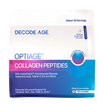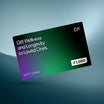Are you quite young but still feel like you're trapped in an older body? Feeling tired more often with chronic pain may be a sign that your biological age is quite higher than your chronological age. What is the difference between the two? Well, keep reading the following space to decode it. Nevertheless, with recent advancements in the healthcare sector, it is possible to find your biological age accurately and to take appropriate measures to match it with your chronological age or even decrease it. Understanding the complexities of the ageing process can also greatly enhance your quality of life and improve your ageing experience.
While some people seem to defy the effects of time, others may experience premature ageing. This raises the question of whether our age is accurately reflected by the number of years we've been alive. Age isn't just the number of grey hairs on your head - it's a combination of factors that determine how long and healthy we live. If you want to uncover the secrets to longevity, it's time to dive into the intricacies of ageing!
What is the biological age test and why is it measured?
“How old are you” is the only question that has been asked if one wants to know your age. But did you know there’s more to it? One is your actual age, which is the chronological age while there is something called the biological age.
Simply put, your biological age tells if your internal system is in good condition or not and whether, for example, your stomach is actually 20 years old or 30. This approach involves evaluating specific biomarkers to determine how our cells and tissues are ageing. For example, you may be 30 years old in terms of years on this planet, but biologically, you could be closer to 40. Understanding our biological age has significant implications for our overall life expectancy.
It's important to broaden our understanding of ageing and take a comprehensive approach to assess our overall health and well-being.In today’s fast-paced world, it is crucial to measure the biological age to take necessary measures for your health and enhance it, simultaneously reducing the risk of chronic and age-associated diseases.
What are the types of Biological Age tests?
Biological age tests aim to measure the overall health and ageing status of an individual, and there are several types of tests available. Here are some examples:
Telomere length test: Telomeres are the protective caps at the ends of chromosomes that shorten as we age. This test measures the length of telomeres in your DNA to determine your biological age.
Epigenetic clock: This test looks at changes in DNA methylation patterns to estimate biological age.
Blood tests: These tests can measure a variety of biomarkers associated with ageing, such as levels of C-reactive protein, glucose, and cholesterol.
Physical performance tests: These tests assess physical function, such as grip strength, balance, and gait speed, which can decline with age.
Brain function tests: These tests assess cognitive function, such as memory, attention, and processing speed, which can also decline with age.
Imaging tests: Imaging tests like MRIs and CT scans can assess the health of various organs and tissues, which can indicate biological age.
How Biological age test works
Genetics and epigenetics are two closely related fields of study that deal with DNA and its impact on the body. Genetics is concerned with the study of DNA, which is a unique code responsible for the production of all the cells in the body. Epigenetics, on the other hand, is concerned with changes that occur “on” the DNA and how they affect health.
Epigenetics controls the activation or deactivation of specific segments of DNA, and various factors, mainly lifestyle-related, can trigger epigenetic changes. Epigenetic modifications refer to chemical changes that occur in the DNA code within cells as people age, such as methylation. DNA methylation is studied extensively as a means to measure biological age. Excessive methylation can hinder the normal function of the cell, leading to a decline in efficiency that underpins the visible effects of ageing, such as changes in hair colour, wrinkles, and joint discomfort.
While genetic inheritance is unavoidable, lifestyle modifications can alter biological age. It is crucial to note that different organs l may have different biological ages, as heavy use of certain substances can lead to an elevated biological age in the liver and kidneys. Home testing kits are available that can evaluate biomarkers in saliva, stool, and tissues to estimate overall biological age and compare it to that of various organs and systems.
To determine biological age, scientists analyse DNA methylation data, which is a chemical modification of DNA that regulates which genes are turned on or off without altering the DNA sequence. By examining patterns of DNA methylation across the genome, we can predict an individual's biological age based on hundreds of thousands of sites that reflect their overall health and functioning.
At-home biological age test kits typically measure biological age using saliva samples, while most scientific studies use blood samples. Biological age in blood and saliva are often similar because they contain many of the same cell types.
However, using DNA methylation to measure biological age allows for the calculation of different biological ages for various parts of the body. By taking a blood sample and analysing DNA methylation, we can determine the biological age of the blood. Similarly, we can obtain different biological ages for skin, saliva, or cheek cells. While biopsies are not currently taken from different organs, it is possible to have different biological ages for various organs, such as the heart, liver, or brain, which may have implications for future health. Overall, DNA methylation analysis offers a comprehensive understanding of an individual's biological age and health status.
How to Calculate Biological Age
There are various methods to calculate biological age, and the specific method used may depend on the type of biomarkers measured in the test. Some common methods for calculating biological age include:
DNA methylation
DNA methylation is a process that can affect gene expression and is used in some biological age tests. This method looks for changes in the pattern of DNA methylation over time, which can be used to estimate biological age.
Telomere length
Telomeres are structures at the end of chromosomes that protect them from damage. The length of telomeres can decrease over time, and this can be used to estimate biological age.
Biomarker-based assessments
These assessments look at various biomarkers in the blood or other bodily fluids, such as levels of inflammation, oxidative stress, or other markers of cellular function. These biomarkers can be used to estimate biological age.
It's important to note that there is no one-size-fits-all method for calculating biological age, and different methods may produce different results. Additionally, biological age is not an exact science and may not always accurately reflect an individual's true biological age.
If you're interested in calculating your biological age, it's best to consult with a qualified healthcare professional who can recommend appropriate tests and provide personalised guidance based on your circumstances.
How to interpret biological test results?
Interpreting the results of a biological age test depends on the specific test used and the factors that contribute to the results. In general, a biological age that is lower than your chronological age indicates that your body is ageing more slowly than average, while a higher biological age suggests that your body is ageing more rapidly.
If you have concerns about your biological age or want to know more about how to interpret the results of a specific test, it's best to consult with a qualified healthcare professional who can provide personalised guidance based on your circumstances.
Lifestyle factors that can affect biological age
Several lifestyle factors can affect biological age in the short term. Some of these factors include:
Sleep: Getting enough restful sleep can help regulate the body's internal clock and keep biological age in check.
Exercise: Regular physical activity can help maintain muscle mass and keep the body in good shape, which can slow down the ageing process.
Diet: A healthy, balanced diet that is rich in nutrients and low in processed foods can help reduce inflammation in the body and improve overall health.
Stress: Chronic stress can harm the body and speed up the ageing process. Finding ways to manage stress, such as through meditation or yoga, can be beneficial.
Smoking and alcohol consumption: Both smoking and excessive alcohol consumption can have negative effects on the body and accelerate the ageing process. Quitting smoking and moderating alcohol consumption can help reduce these effects.
It's important to note that while these lifestyle factors can have a short-term impact on biological age, they should be maintained over the long term to see lasting benefits.
Final Thoughts
While certain things are not in our control, we can surely control the way we eat and change our outlook towards life. By making the right dietary and lifestyle choices, one can have the same biological age or even less. The goal is to not have a biological age greater than your chronological age. Biological age is a measure of the health of an individual's internal organs, which may be different from their chronological age. It is determined by evaluating specific biomarkers that indicate how our cells and tissues are ageing.
Various tests can be used to measure biological age, including telomere length tests, epigenetic clocks, blood tests, physical performance tests, brain function tests, and imaging tests. While certain things are not in our control, we can surely control the way we eat and change our outlook towards life. By making the right dietary and lifestyle choices, one can have the same biological age or even less. The goal is to not have a biological age greater than your chronological age. Thus by measuring biological age, one can take necessary measures for one’s health and reduce the risk of chronic and age-associated diseases.
Faqs:
1. Can biological age testing predict an individual's risk for developing certain diseases?
Biological age testing can provide information about an individual's overall health and ageing status, which may be associated with the risk of developing certain age-related diseases. However, it is important to note that these tests are not always accurate or reliable and more research is needed to fully understand their limitations and potential uses.
2. How accurate are biological age tests, and what factors can influence the results?
The accuracy of biological age tests can vary depending on the specific test used and individual factors. Factors that can influence the results include genetics, lifestyle habits, environmental factors, and the type of biomarkers or measurements used in the test. More research is needed to fully understand the limitations and potential uses of biological age tests.
3. Are there any risks associated with biological age test
Biological age tests are completely safe and no risk is associated with it.
4. How often should an individual take a biological age test, and is it recommended for everyone?
There is no set frequency for taking a biological age test, and whether or not it is recommended for everyone is up for debate. It may be more useful for individuals who are at higher risk for age-related diseases or those looking to make lifestyle changes to improve their overall health. Ultimately, it is up to the individual and their healthcare provider to determine if a biological age test is appropriate and how often it should be taken.
5. What is the future of biological age testing, and how might it impact the field of healthcare and personalised medicine?
The future of biological age testing is likely to involve more accurate and comprehensive assessments using a combination of biomarkers and artificial intelligence. This could greatly impact the field of healthcare and personalised medicine by allowing for more targeted and effective interventions based on a patient's individual ageing profile.


















Leave a comment
All comments are moderated before being published.
This site is protected by hCaptcha and the hCaptcha Privacy Policy and Terms of Service apply.